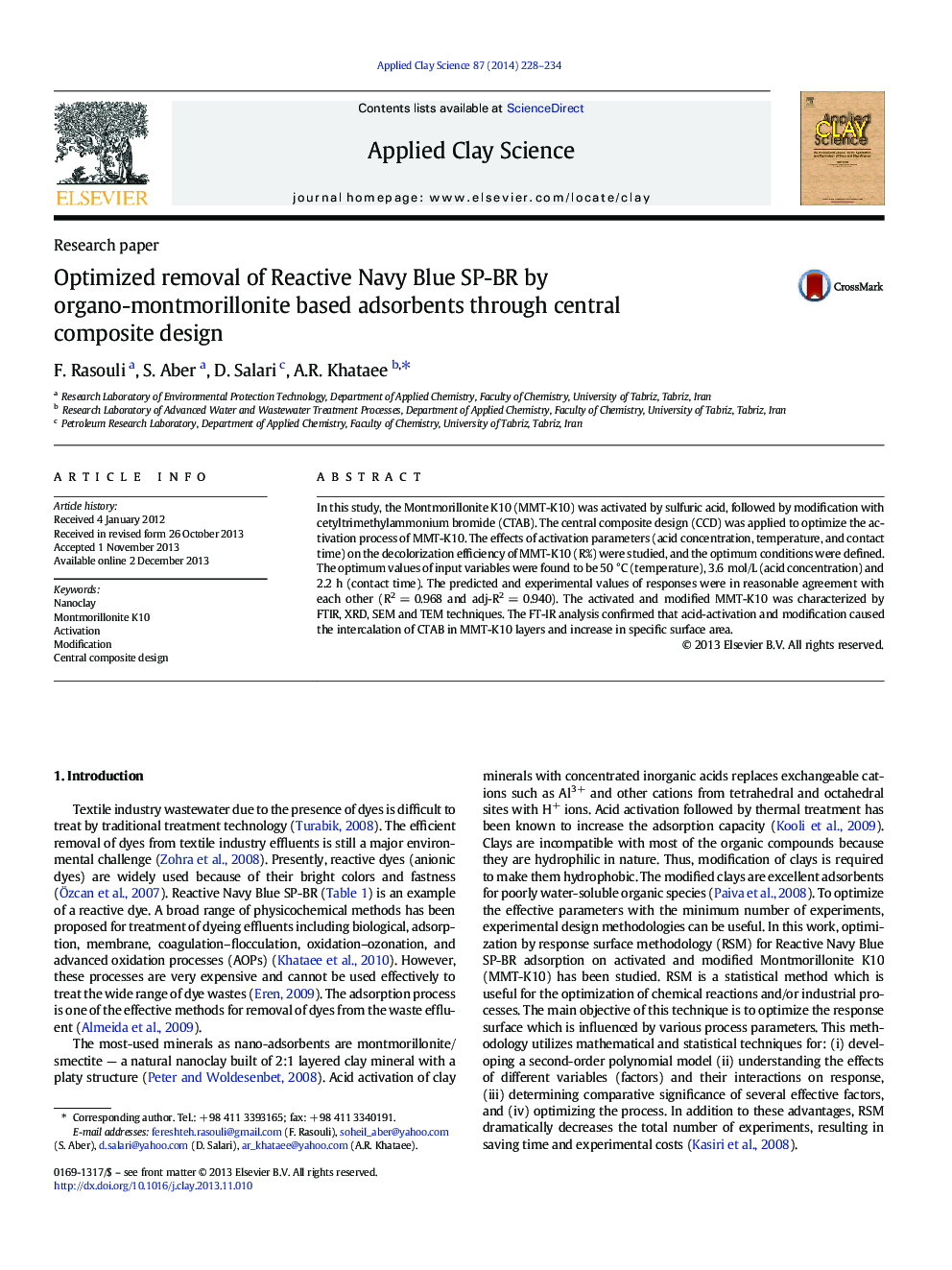| Article ID | Journal | Published Year | Pages | File Type |
|---|---|---|---|---|
| 1694969 | Applied Clay Science | 2014 | 7 Pages |
•Montmorillonite K10 (MMT-K10) treatment increased the adsorption capacity.•Properties of the MMT-K10 modified according to nature of exchangeable cation•Intercalation of cationic surfactant CTAB into activated MMT-K10•Applying response surface methodology (RSM) to optimize the activated MMT-K10
In this study, the Montmorillonite K10 (MMT-K10) was activated by sulfuric acid, followed by modification with cetyltrimethylammonium bromide (CTAB). The central composite design (CCD) was applied to optimize the activation process of MMT-K10. The effects of activation parameters (acid concentration, temperature, and contact time) on the decolorization efficiency of MMT-K10 (R%) were studied, and the optimum conditions were defined. The optimum values of input variables were found to be 50 °C (temperature), 3.6 mol/L (acid concentration) and 2.2 h (contact time). The predicted and experimental values of responses were in reasonable agreement with each other (R2 = 0.968 and adj-R2 = 0.940). The activated and modified MMT-K10 was characterized by FTIR, XRD, SEM and TEM techniques. The FT-IR analysis confirmed that acid-activation and modification caused the intercalation of CTAB in MMT-K10 layers and increase in specific surface area.
